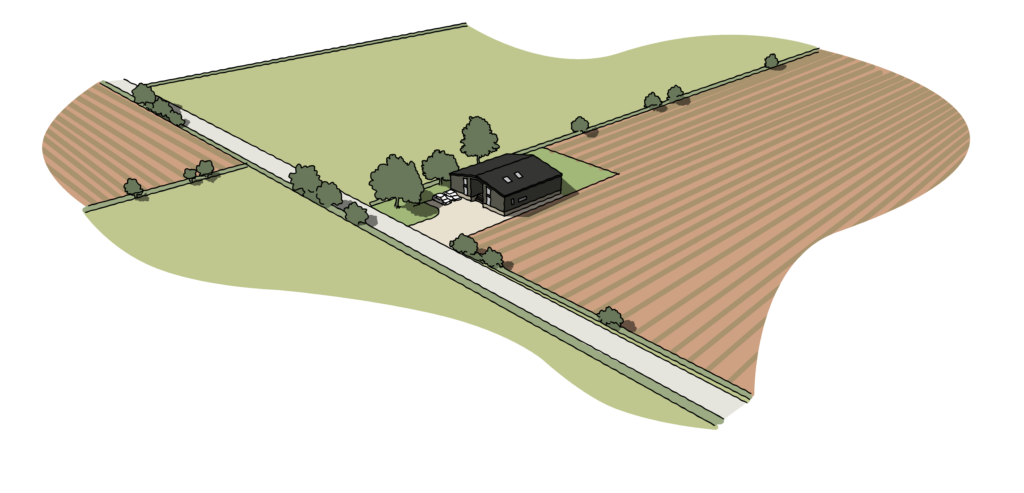Class Q Changes: As the transitional period ends, what’s next for barn conversions under permitted development?
Posted by Jack Young
As 20th May 2025 approaches, we are nearing the end of the transitional period for Class Q permitted development rights. These rights, which allow agricultural buildings to be converted into homes without full planning permission, were significantly revised in May 2024. Since then, applicants have had the option to use either the old or new rules – but that flexibility ends soon.
From 21st May 2025, all new Class Q applications must comply with the updated legislation. And with that change, we bid farewell to an era of large, bespoke rural conversions – while welcoming a perhaps more practical and community-minded future for barn reuse.

What does that mean for you?
If you’re still aiming for a large single-dwelling barn conversion, you only have a small window of opportunity. Applications submitted under the old Class Q rules must be received by the 20th May 2025. From the next day onward, those rights will disappear, and only the new, more limited, provisions will remain in force.
Now is the time to assess whether your scheme is best served by the outgoing rules, or if it might benefit more from the new multi-unit possibilities. Our team can advise on planning strategy, prepare drawings and feasibility studies, and guide your project through the entire prior approval process.
What does it mean for the future of barn conversions?
Until recently, Class Q offered the potential to create expansive dwellings of up to 465 square metres – often resulting in eye-catching, architecturally ambitious homes that wouldn’t look out of place on a prime-time TV slot.
But under the new Class Q rules, that scale is no longer permitted. The revised regulations limit each new dwelling to a maximum of 150 square metres, with a total cumulative floor space across all dwellings capped at 1,000 square metres. In place of a single showpiece residence, we now have the opportunity to create up to 10 modestly sized homes from a single agricultural unit.
It’s fair to say that the updated framework will put an end to the era of the “Grand Designs” barn conversion – those singular, bold architectural statements that have dotted the countryside over the last decade. But what we’re gaining in return may arguably offer more to rural communities.
By prioritising quantity and modesty, the legislation supports the creation of small groups of homes that are more likely to house local families and rural workers. Rather than a solitary mansion on the skyline, the aim is now to create modest, well-integrated housing clusters that bring life back into redundant or underused agricultural buildings.
More modest houses need not mean more mundane. A thoughtfully designed group of smaller dwellings, sympathetic to the character of the existing landscape, can still offer real architectural merit. With careful detailing, material choice, and a focus on placemaking, these schemes can be every bit as visually appealing as their grander predecessors – just with a different kind of impact.
More Flexibility, New Opportunities
The updated rules offer additional design flexibility in other areas too. For the first time, single-storey rear extensions, up to four metres, are permitted (though only where an existing hard surface was in place before 24th July 2023). External alterations such as windows, doors, and roofs can now project up to 200mm beyond the original building, making it easier to achieve insulation and detailing that meet modern standards.
A Different Route for Grand Designs
Importantly, this does not mean the end of Grand Designs-style conversions altogether. Ambitious, large-scale barn conversions are still entirely possible – they will just require a different planning route. Full planning permission will now be necessary for proposals that exceed the new Class Q limitations. While this route involves a more detailed assessment and policy-led approach, it also allows for more architectural freedom and design expression.
In many cases, securing Class Q approval as a fallback position can still be a powerful tool in the planning strategy. It may demonstrate the principle of residential use on-site and strengthen a case for a full application, particularly where an enhanced or alternative design better responds to site context, heritage, or sustainability goals. Strategically, Class Q can remain a useful lever, even if the desired project sits just beyond its new restrictions.
Here at Paul Robinson Partnership, our team are experts in planning strategy, and will be able to advise on the changes to regulations and how they may impact design schemes in progress, or in the future. For more information please contact us.
